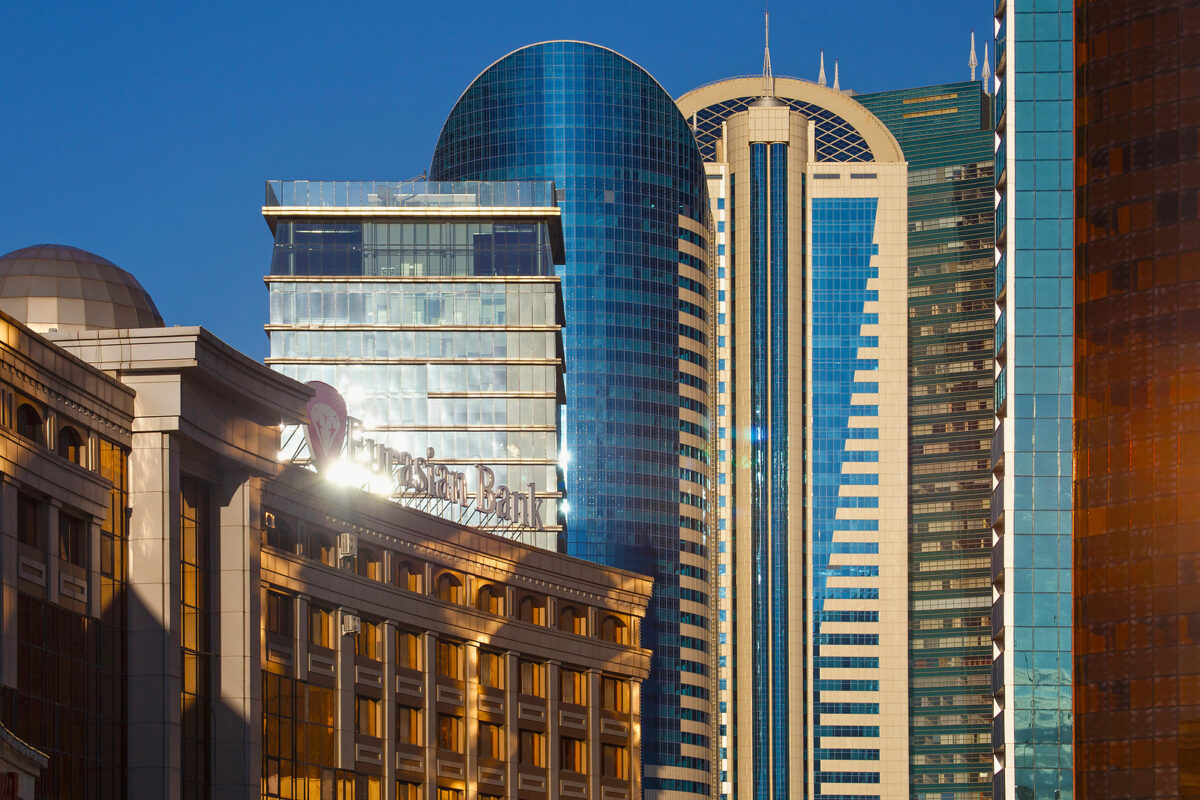It’s the largest landlocked country in the world and has long been dependent on its vast natural resources, especially oil and gas.
Over the past decade however, Kazakhstan has undergone an economic transformation having embarked on a broad diversification strategy, identifying sectors such as information technology, logistics, and green energy as more sustainable engines of growth.
This growth has so far been steady, if far from spectacular. Kazakhstan’s economy grew at an average annual rate of around four per cent from 2013 to 2023 – modest compared to the rapid rise of East Asian economies, but consistent and broadly impressive considering the challenges Kazakhstan faces as a landlocked economy.
The International Monetary Fund (IMF) estimated the country’s GDP at 226 billion US dollars in 2023, a significant leap from around 170 billion US dollars a decade earlier.
Energy
While diversification is slowly making an impact, the primary engine of Kazakhstan’s growth remains the energy sector, particularly oil, natural gas, and uranium.
The country holds the world’s 12th-largest proven oil reserves, and the Caspian Sea oil fields have been crucial in maintaining its export-led growth model. In 2022, hydrocarbons accounted for approximately 60 per cent of Kazakhstan’s total exports, with oil contributing nearly 40 per cent of government revenue.
The Tengiz, Kashagan, and Karachaganak oil fields remain the backbone of Kazakhstan’s energy production, and investment in these sectors, particularly from foreign companies such as Chevron and ExxonMobil – both with a presence in the country dating back more than 25 years – has been significant.
However, the volatility of global oil prices has exposed Kazakhstan to economic vulnerabilities. It was the crash in oil prices in 2014-15, which severely impacted the country’s growth trajectory, that prompted policymakers to consider taking diversification more seriously.
The rise of new sectors
Since the mid-2010s, the Kazakh government has therefore pursued policies aimed at reducing the economy’s dependency on energy exports; particularly since Kassym-Jomart Tokayev took over as president from Nursultan Nazarbayev in 2019.
Even before the presidential transition, however, Kazakhstan had been working to modernise its economy through a series of reforms and initiatives.
The Nurly Zhol economic policy, launched in 2014, focused on infrastructure development, including road, rail, and energy connectivity across the country. China’s Belt and Road Initiative (BRI) has also played a crucial role in boosting Kazakhstan’s infrastructure, transforming it into a key transit hub between China and Europe.
In more recent years, Kazakhstan has sought to foster the growth of industries like agriculture, finance, logistics, and manufacturing. Agriculture, which employs nearly 20 per cent of the workforce, is being transformed through modern technology, with the government aiming to position Kazakhstan as a major exporter of wheat, meat, and dairy products.
The country’s vast steppe is also increasingly seen as an asset for the production of organic food, which has growing demand in markets such as China and the EU.
The most dynamic area of growth, however, is arguably Kazakhstan’s burgeoning IT sector. The creation of the Astana International Financial Centre (AIFC) in 2018 signaled Kazakhstan’s ambition to become a regional hub for fintech and digital services.
The government has set ambitious targets for the IT sector, aiming to increase its contribution to GDP to five per cent by 2025. As part of these efforts, Astana Hub, a state-backed IT park, has attracted numerous tech start-ups and international investors.
The government is also focusing on digital transformation across sectors, from e-commerce to e-government services.
Foreign investment
Kazakhstan’s strategic location and natural resources have long made it a magnet for foreign investment from energy companies. Over the past decade, foreign direct investment (FDI) into Kazakhstan has averaged around 20 billion US dollars annually, according to World Bank data. Much of this investment has come from Western countries and China, focusing on oil, gas, and mining.
FDI patterns have shifted noticeably in recent years. With the development of the BRI, Chinese companies have significantly increased their presence in Kazakhstan, particularly in sectors such as logistics, mining, and telecommunications.
While China’s growing influence is seen as an economic boon, it also raises concerns over dependence on one country, both economically and geopolitically.
Nevertheless, European companies have also shown increasing interest in Kazakhstan, particularly in green energy projects.
In 2021, Kazakhstan launched its Green Economy Concept with the goal of generating 50 per cent of its energy from renewable sources by 2050. The country’s vast, windy steppes provide ideal conditions for wind energy, while its sun-drenched southern regions have significant potential for solar power. European firms are eager to invest in these sectors, as Kazakhstan seeks to align itself with global decarbonisation trends.
Then there’s nuclear power. Earlier this month, Kazakhs voted overwhelmingly in favour of building the independent country’s first nuclear power plant (NPP). Its last, Soviet-era NPP was decommissioned in 1999.
Four contractors are reportedly being considered to construct the plant: Russia’s Rosatom, France’s Électricité de France (EDF), China National Nuclear Corporation, and South Korea’s Korea Hydro & Nuclear Power (KHNP). Moscow would appear to be in pole position.
Energy aside, Kazakhstan still faces barriers to attracting more diversified FDI. Perceived corruption (the country ranks just 93rd on Transparency’s Corruption Perception Index), bureaucracy, and an unpredictable legal environment continue to deter some investors, particularly those from smaller, non-energy sectors.
Geopolitics
Politically, Kazakhstan has long been viewed as one of the more stable countries in Central Asia, but it is not without its challenges.
The transition from Nazarbayev, who ruled Kazakhstan for nearly 30 years, to his handpicked successor Tokayev, has been smooth on the surface. However, growing social unrest, most notably during the January 2022 protests over rising fuel prices, exposed underlying tensions within the country.
These domestic challenges are compounded by Kazakhstan’s complex geopolitical environment. Sandwiched between two major powers, Russia and China, Kazakhstan has had to carefully balance its foreign policy.
Russia remains a key ally and trading partner, with the two countries sharing a long history and extensive economic ties.
However, the war in Ukraine has created a delicate situation for Kazakhstan. The country has avoided directly supporting Russia’s invasion, and Tokayev has repeatedly emphasised Kazakhstan’s territorial integrity and sovereignty, signaling a careful but significant divergence from Moscow.
At the same time, China’s economic influence in Kazakhstan continues to grow, particularly through the BRI. Kazakhstan has sought to position itself as a vital transit corridor for Chinese goods destined for European markets, but some Kazakh citizens view China’s growing presence with suspicion, fearing economic and political domination.
Despite the progress Kazakhstan has made in diversifying its economy, it faces significant challenges. The global transition away from fossil fuels poses a direct threat to its oil-dependent economy.
The government’s push toward renewable energy is a step in the right direction, but Kazakhstan will need to accelerate its efforts if it is to mitigate the impact of falling demand for hydrocarbons.
Additionally, while the IT sector shows great promise, it remains nascent, and Kazakhstan will need to build a robust digital infrastructure and attract more foreign talent and expertise to realise its full potential.
Kazakhstan also faces the challenge of improving its business environment. Corruption remains a persistent issue, and the government will need to make meaningful reforms to improve transparency and the rule of law if it hopes to attract investment beyond the energy sector.







